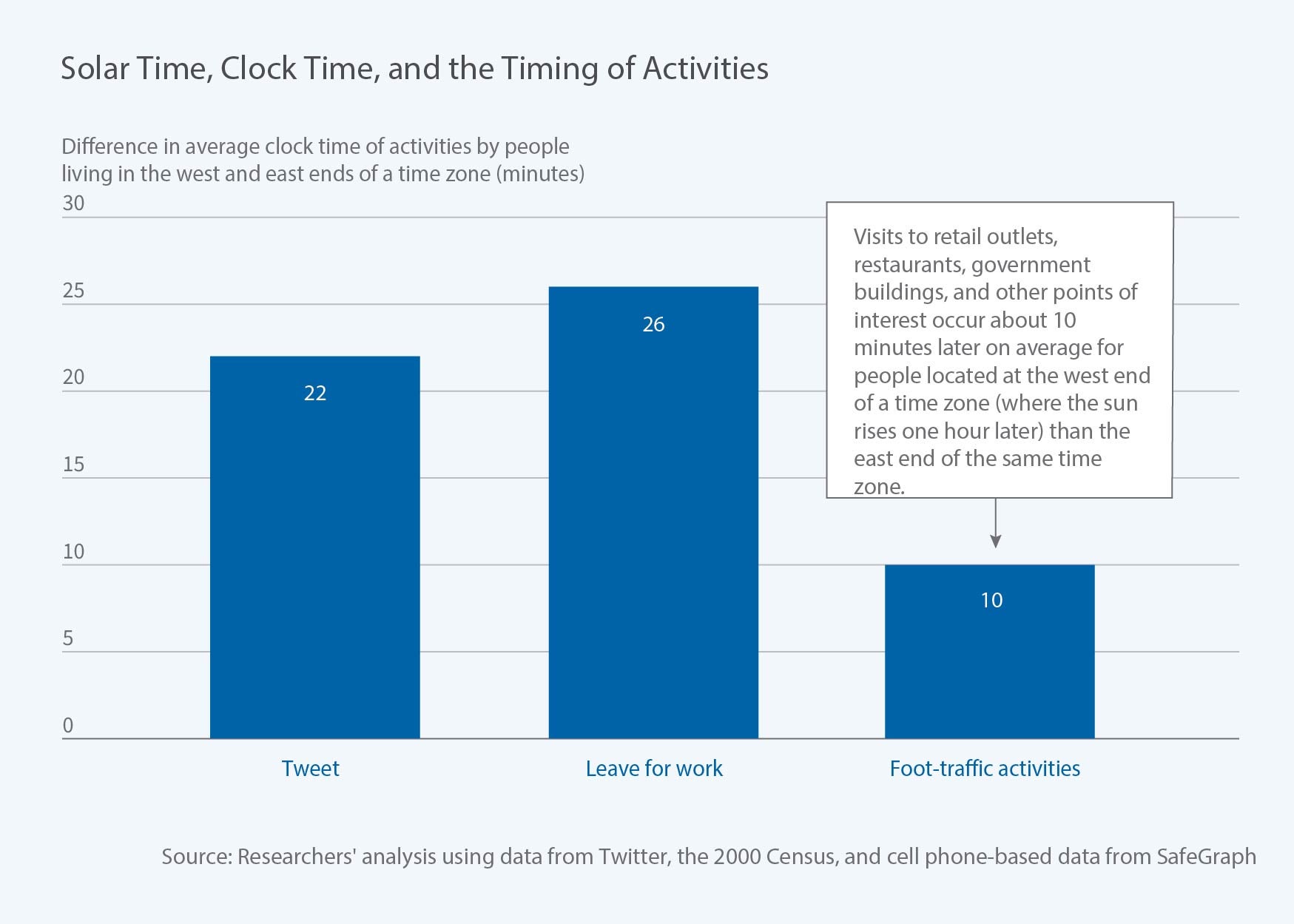When Clocks Say It’s One Time and the Sun Says It’s Another

Before rail and communication networks spurred the introduction of time zones in the late nineteenth century, most towns operated on “solar time,” with noon occurring around when the sun was at its apex. Today, solar noon occurs about an hour earlier in clock time at the east end of a time zone than at the west end. As a result, in winter, workers in Grand Rapids, Michigan, heading to work at 7:30 a.m. may be doing so in the dark, even though the sun has already risen on their counterparts in Boston, Massachusetts who are commuting at the same time. Both cities are in the Eastern Time Zone.
In When We Change the Clock, Does the Clock Change Us? (NBER Working Paper 30999), Patrick Baylis, Severin Borenstein, and Edward A. Rubin find that when clock time and solar time diverge, individuals adjust the clock time of some of their activities, but not by enough to keep them on a constant solar schedule. The researchers examine data from Twitter, the US Census, and cellphone-based foot traffic to study the clock times at which various activities occur among people living in the same time zone but under different solar times.
On average, a one-hour differential between solar and clock time, which is the typical width of a time zone, shifts the timing of routine activities by between 9 and 26 minutes.
They collect 2.5 billion geolocated tweets for the period April 2014 to March 2019 and conclude that those who live in the far west of a time zone tweet about 22 minutes later on average than those at the far east end of the same time zone. They also analyze average clock times for tweets containing the words “breakfast,” “lunch,” “dinner,” “good morning,” and “good night.” Breakfast tweets show the greatest influence of solar time, adjusting by nearly half of the difference in solar time.
Analysis of long-form responses to the 2000 Census, which include information on when respondents typically go to work, produces similar results: respondents offset clock time disparities by about 26 minutes for each one hour difference between clock and solar time.
Using cellphone-based foot traffic data, the researchers analyze visits to retail establishments in the pre-COVID years of 2018–19. They find that the effect of the differential between solar time and clock time was much smaller than under the other measures, with those on the west end of a time zone frequenting similar places 10 minutes later on average than those on the eastern edge. The effect was the same on weekdays and weekends, and the differential was greater at retailers, restaurants, and fitness centers — about the same as with tweet times — than at houses of worship, higher education institutions, and health offices where the effect of solar time was about zero.
Solar time appears more influential the further north one lives in a given time zone. The researchers suggest that because residents of higher latitudes experience larger seasonal variations in sunlight, they are more accustomed to departing from clock time. Surprisingly, however, counties that are more rural or have more outdoor workers do not consistently exhibit more sensitivity to solar time than other areas.
The researchers conclude that the coordination value and social norms of organizing life around clock time are very powerful and dominate the timing of activities, though differences between clock time and solar time do pull activities somewhat in the direction of preferred solar times.
— Steve Maas


